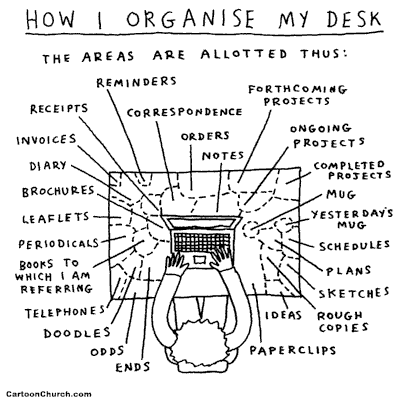
Freelancers often worry about creativity blocks, lack of time, unsatisfactory levels of productivity and lack of promising projects. But what happens when you find yourself bursting with ideas, enthusiasm for promising projects, inspiration for your own marketing efforts, combined with the expectations of your day job/part-time job if you have one?
My “juggling” need started in late May when I had to deal with multiple competitions I wanted to enter, lots of ideas to pitch to different kinds of clients, upcoming deadlines for existing clients and the much-needed updates to my own web presence and marketing plans. With only 2 to 4 weeks to pull it all off, I came with an efficient plan to manage everything – without losing any valuable ideas in the process. I’m progressing at an effective speed.
Oh, yes – this can happen. Maybe it is the summer bringing out extra creativity in me or the upcoming deadlines of writing competitions, but I never had so many ideas and deadlines at the same time. The competitions want the type of stories I’m interested in, I have a lot of cool ideas both for my own and other people’s publications, potential new clients…and did I mention that the deadlines are relatively close and I also have a part-time job?
No, I’m not complaining. I’ve been quite thrilled and motivated actually. OK, I did panic a bit in the beginning. But once I sat down and came up with a followable plan (which is a plan that doesn’t push my limits more than it has to.) Everything fell into place.
So how do you start taking steps to enable yourself to juggle everything at once while performing satisfactorily at all of them without missing deadlines? Beware that you’ll need to do most (if not) all steps simultaneously.
1) Take a deep breath, and start researching.
What are your options? The deadlines? The costs? Conditions?
Prioritize according to your needs, expectations and the potential rewards. Then get to work, starting from number 1 on your to-do list.
2) Note down all the ideas- no matter how big or small, good or mediocre, detailed or precise.
Note who they might be for, and don’t limit yourself to one market/client. If this is a perfect fit for more than one market, write that down too.
3) Take this rush “period” to quickly but efficiently digest the extra information you need on the markets and how-tos.
I know there are a lot of great resources lying around waiting to be studied- and there is no time like the immediate need to devour the urgently-needed tips. This might even give you more ideas, which you will include in action number 2. Nobody is 100% creative or productive all the time, so take full advantage of this period.
4) Do the actual work – whether it is marketing, designing, writing, editing or else.
5) Switch between projects, without missing deadlines, when you get stuck or less productive.
6) Check, polish and deliver to the final destinations – but don’t forget to keep track of what you did for whom and when.
7) Cross “the done” off from your list of priorities – and make a new list of priorities if you have discovered more of those.
8) Review, refresh and edit your list of ideas- note their desired destinations and make a plan for the next couple of months.
9) Relax a little, do the social stuff you might have missed to recharge for the next round of rush period.
10) Reap the rewards and lessons of this insanely busy period.
I always forget step #10. I think that learning lessons is probably the most important thing to do.
Sometimes practicing what you preach, or at least doing what you know is best for you can be a very tricky thing to do. I don’t think anyone really manages that without slipping, but a little is better than nothing. I have learned like a million things since I started my writing career, but I think I’ve managed to learn like a hundred of them. Still, it is not so bad, is it? And I really am working on the rest:)